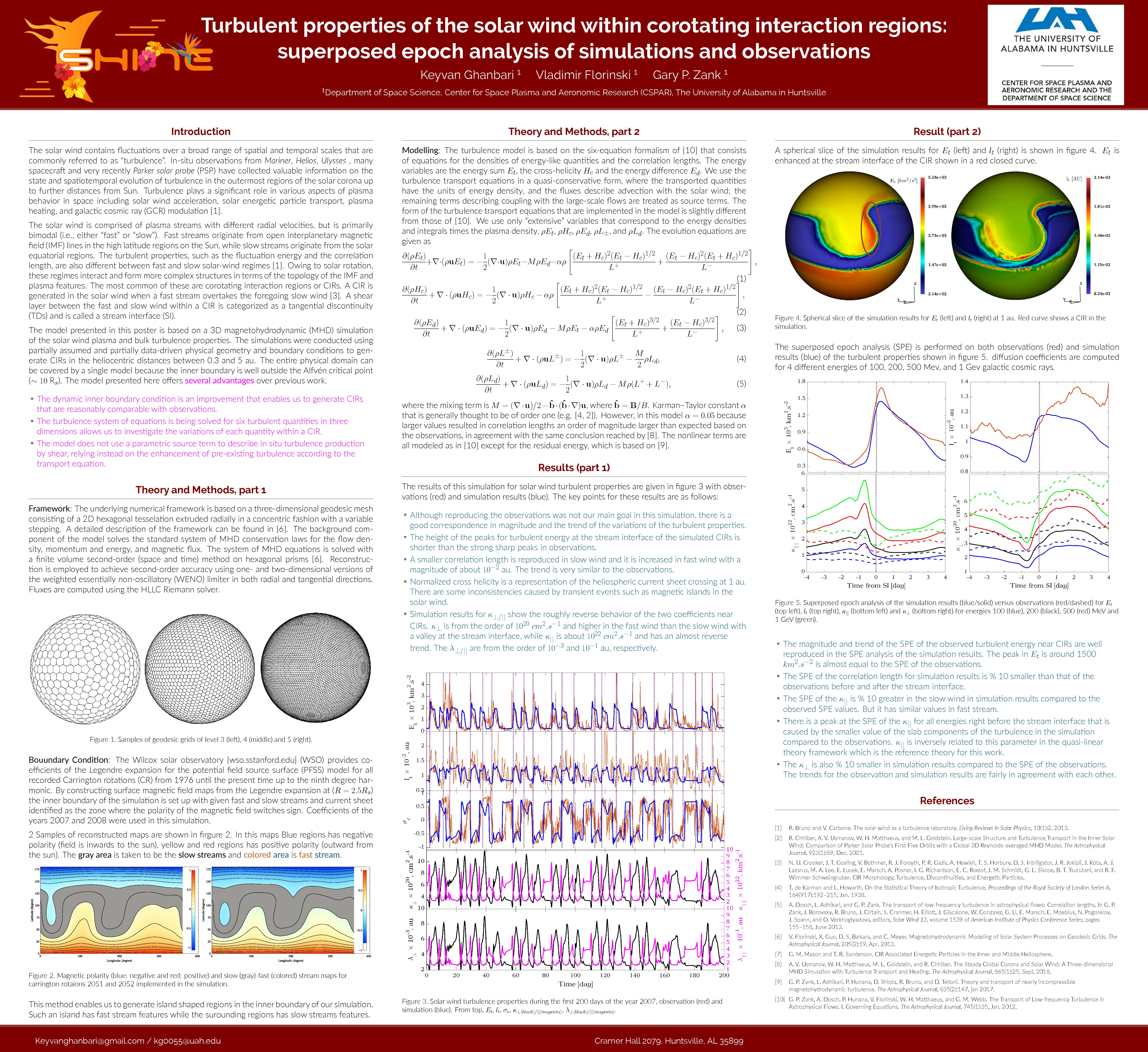Authors: Keyvan Ghanbari (University of Alabama in Huntsville), Vladimir Florinski ( the university of Alabama in Huntsville), Gary P. Zank ( the university of Alabama in Huntsville)
Solar wind turbulence is responsible for many physical phenomena in the heliosphere including energetic cosmic particle transport and acceleration. Turbulence is generated in the solar wind by three major sources, these being shocks and stream-stream interactions in the “inner heliosphere” and by the generation of pick-up ions in the more distant outer heliosphere. Corotating interaction regions are significant generators of turbulence due to the discontinuity between the slow and fast streams within them. Numerical MHD simulation of the solar wind plasma is conducted to study this shear layer in order to illuminate the transport of the cosmic rays within corotating interaction regions. Legendre harmonics generated by the PFSS method provided by the WSO interface for the two most recent solar minima are used for the inner boundary of the simulation. After simulating the solar wind plasma and turbulence during these two periods, a superposed epoch analysis was performed over the turbulent properties of the solar wind and diffusion properties of galactic cosmic rays. Our results were compared to observations. The results of the superposed epoch analysis illustrate that the average properties of the solar wind turbulence and parallel and perpendicular diffusion coefficients are well reproduced near corotating interaction regions in our simulation.


